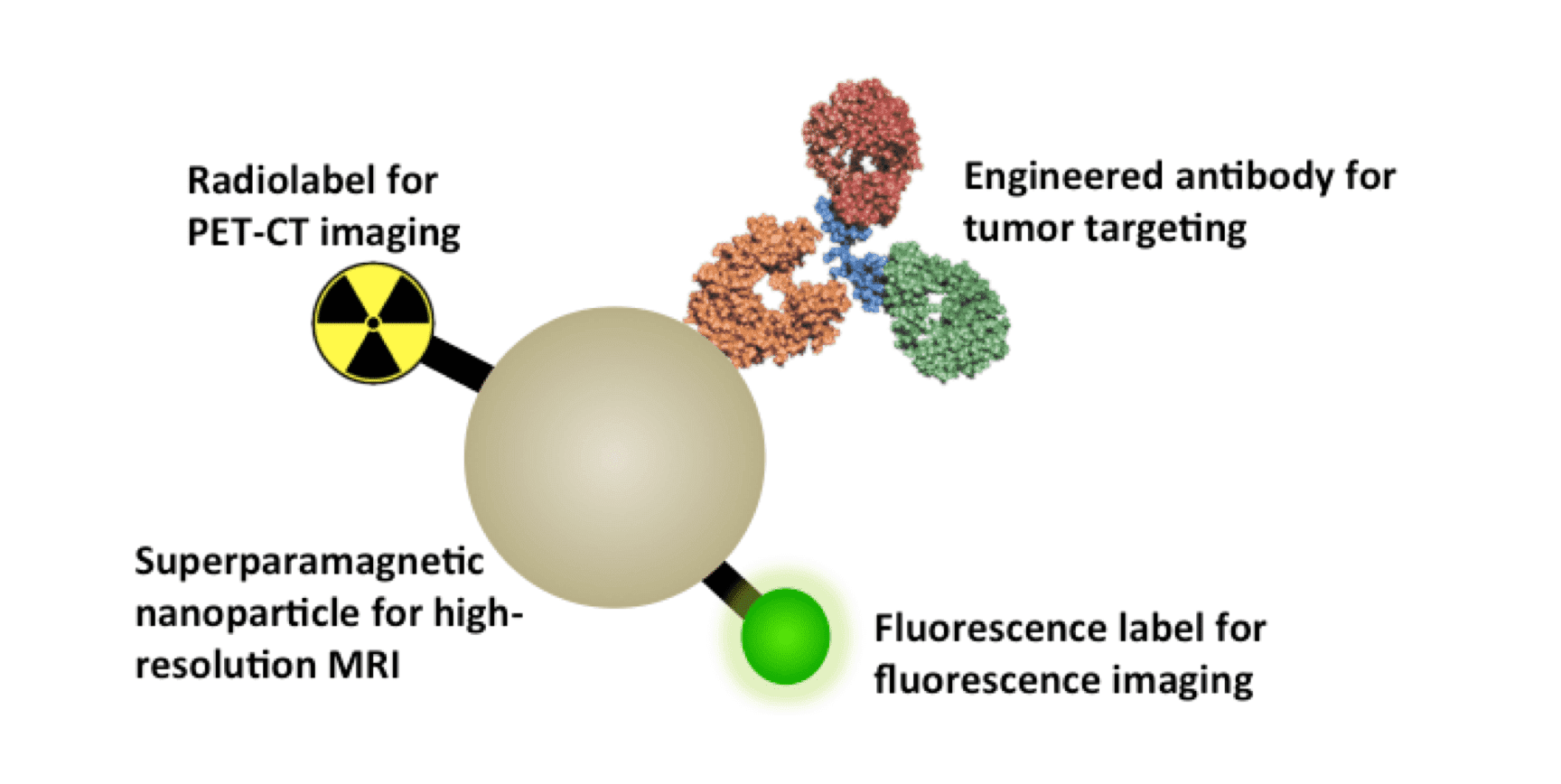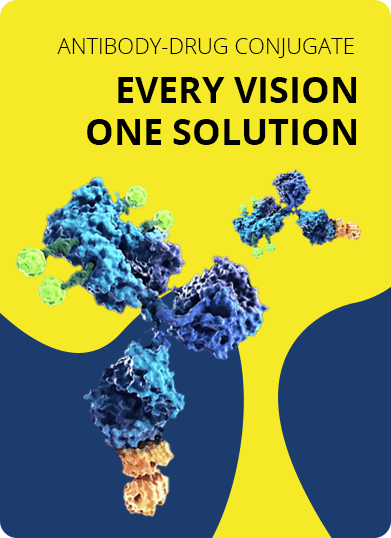- Home
- UTC Development
- Antibody-based Probe Development
- Antibody-Nanoparticle Probe Development
Antibody-Nanoparticle Probe Development Service
Nanoparticles have been widely investigated and exploited for decades in a broad range of biomedical studies and applications. With sizes in the nano-scale range (10-100 nm), nanoparticles are perfect candidates as probes or drug-carriers for high-resolution imagery, efficient diagnosis, and drug delivery vesicles. Many therapies involving nanoparticles have been developed for numerous diseases including cancer, diabetes and Alzheimer’s disease. With the development of biochemical and biomedical technologies, nanoparticles have become controllable in size, shape, composition, and properties for a variety of applications. For instance, gold nanoparticle (Au NP) is an attractive contrast provider for the visualization of biomaterials with a number of different techniques, including optical microscopy, electron microscopy, photothermal imaging, and photoacoustic imaging. With more sophisticatedly optimized physicochemical properties, Au NPs are also chosen as high-resolution X-ray imaging contrast agents for the diagnosis and analysis of tumor-related diseases.
Moreover, metal-based magnetic nanoparticles, including gadolinium (Gd), manganese (Mn) and iron oxide nanoparticles, are all good contrast agents for magnetic resonance imaging (MRI) with high spatial resolution. Regarding more advanced MRI techniques, superparamagnetic iron oxide nanoparticles with optimized dispersity and biocompatibility are highly desirable for high-resolution MRI. Some fluorescent or radio labeled nanoparticles are also widely applicable and highly potential as labeling agents for high-resolution fluorescence imaging or positron emission tomography (PET).
Advances in nano-biotechnology in the past few decades have enabled a series of strategies for nanoparticle modification and optimization. The most commonly used strategies are the attachment or conjugation of different functional groups, moieties or ligands to the surface of nanoparticles. Antibodies and their derivatives, among a broad range of targeting ligands, have been shown to efficiently direct the nanoparticles as imaging agents, nano-probes or drug carriers, to their desired sites in the body. Comparing to the free nanoparticles, antibody-conjugated nanoparticles are more site-specific, resulting in higher accumulation on the target area and consequently, lower dosage requirements. Since nanoparticles can be synthesized or post-synthetically modified with diverse surface groups, it is convenient to conjugate the nanoparticles with antibodies either by using a short linker or via direct interactions through different chemical reactions (thio-maleimide reaction, amine-carboxyl reaction…) or bio-recognitions (avidin-biotin interaction…).
With a large antibody library and expertise in conjugation chemistry and nanoparticle surface chemistry, Creative Biolabs provides customers with custom antibody-nanoparticle probes, which are excellent agents for high-resolution imagery, efficient diagnosis and treatment of diseases. Besides the preparation of common antibody-nanoparticle probes, the science team at Creative Biolabs also provides customers with the service to develop highly customized multi-functional antibody-nanoparticle probes for specific objectives in biomedical studies and clinical applications. Creative Biolabs will be your one-stop-shop for specialized antibody-nanoparticle probe development, from antibody design and production, nano-particle preparation, development of conjugation strategies, analysis and optimization of the conjugates, to scale-up production of antibody-nanoparticle probes with high efficiency and activity. Please contact us for more information and a detailed quote
 An example of a custom antibody-nanoparticle probe: the multi-functionalized superparamagnetic nanoparticle can be used as the contrast agent for high-resolution MRI; the radiolabel on the nanoparticle makes the nanoparticle detectable by using PET/CT imaging techniques; the fluorescence label provides the nanoparticle with the ability to be detected by fluorescence imaging techniques; the antibody conjugated with the nanoparticle is able to efficiently direct the nanoparticle to specific tumor sites in the body, which enables the antibody-nanoparticle probe to be used for high-resolution imagery and the diagnosis of cancer with the help of different techniques.
An example of a custom antibody-nanoparticle probe: the multi-functionalized superparamagnetic nanoparticle can be used as the contrast agent for high-resolution MRI; the radiolabel on the nanoparticle makes the nanoparticle detectable by using PET/CT imaging techniques; the fluorescence label provides the nanoparticle with the ability to be detected by fluorescence imaging techniques; the antibody conjugated with the nanoparticle is able to efficiently direct the nanoparticle to specific tumor sites in the body, which enables the antibody-nanoparticle probe to be used for high-resolution imagery and the diagnosis of cancer with the help of different techniques.
For Research Use Only. NOT FOR CLINICAL USE.

Online Inquiry
Welcome! For price inquiries, please feel free to contact us through the form on the left side. We will get back to you as soon as possible.
